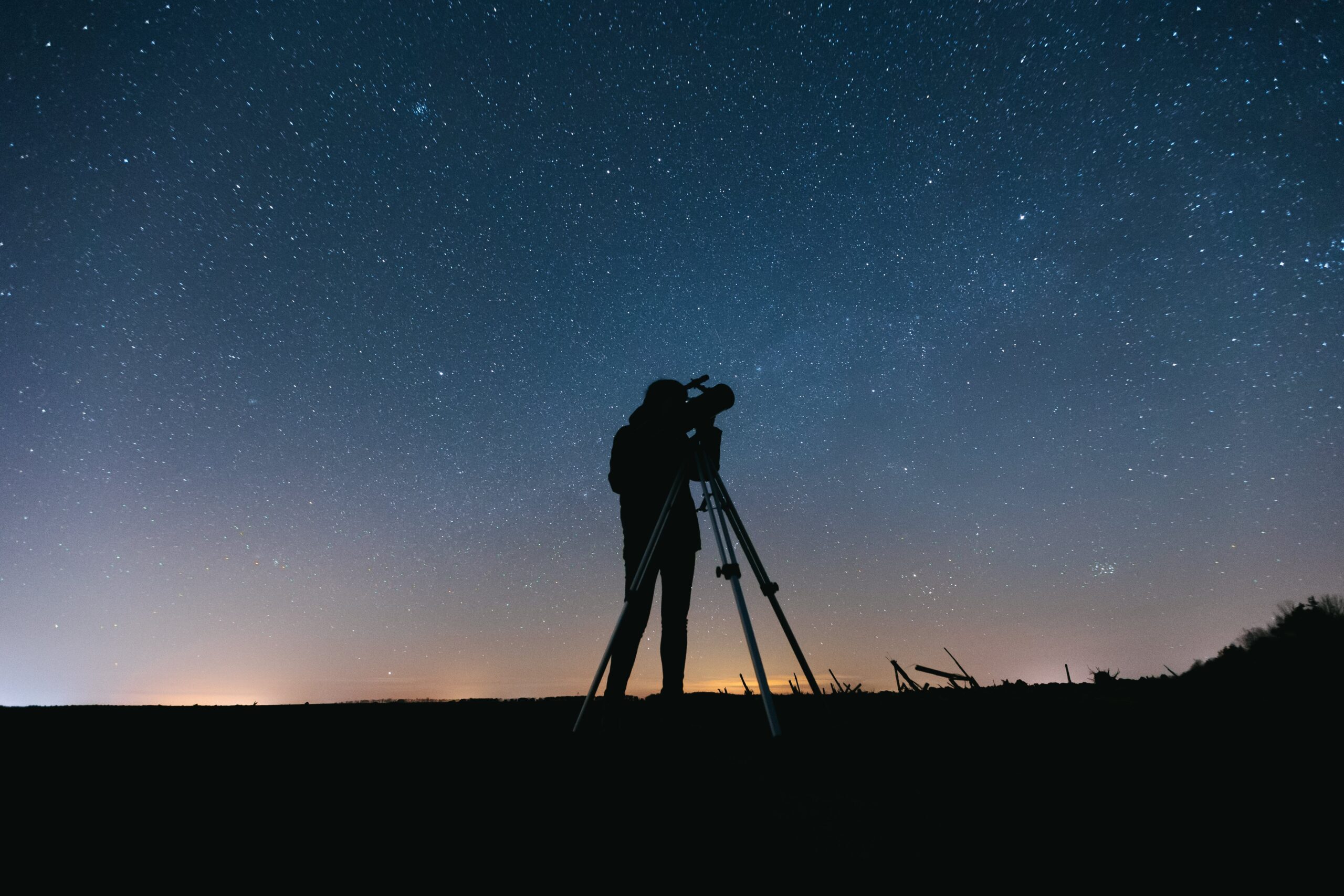As a longtime stargazing enthusiast, I’m thrilled to be your guide to the celestial wonders awaiting you in the night sky! When I first peered through my beginner telescope and glimpsed Saturn’s rings and Jupiter’s moons, I was absolutely hooked on astronomy’s magic. Whether you currently own binoculars or a telescope or plan to buy your first one soon, I’ll illuminate everything you need to launch your stargazing hobby on the right cosmic trajectory.
From tips on observing planets and stars to pointers on dark sky etiquette, you’ll be equipped to experience incredible galactic vistas that will leave you starstruck and eager to continue your astronomical adventures. So join me on an exhilarating tour of the cosmos and prepare to discover why stargazing’s spell has enchanted skywatchers for centuries! Now let’s embark on a journey among the stars together.
Gearing Up for Stargazing as a Beginner
Stargazing is one of the most exciting hobbies I’ve discovered. Once you start peering into the night sky through a telescope, you’ll be hooked. To get started, you’ll need a few essential pieces of equipment.
A Telescope or Binoculars
For a beginner, I’d recommend starting with binoculars or a simple telescope. Binoculars are very portable and easy to use, perfect for learning the night sky. A small refractor telescope, like the Orion StarBlast or Meade Infinity, provides stunning views of the moon and planets. You can always upgrade to a more powerful scope once you get the hang of it.
A Star Chart or Sky Map
To identify celestial objects, you’ll need a star chart that shows the constellations and locations of stars, galaxies, and nebulae. Free mobile sky map apps like SkyView Free, Stellarium Mobile, or Google Sky Map use your phone’s GPS and motion sensors to display an interactive sky chart. They’re very handy for learning your way around the night sky.
A Red Flashlight
A regular white flashlight will ruin your night vision and make objects harder to see. Use a red light instead, as red light doesn’t affect your eyes’ dark adaptation. You can find inexpensive red flashlights at most astronomy retailers.
Warm Clothes
Stargazing at night, especially in the winter, can get quite chilly. Dress in warm layers, including a coat, hat, gloves, and insulated boots. You’ll want to be comfortable for long observing sessions.
With the right equipment and a little practice, you’ll be discovering nebulae, galaxies, and star clusters in no time. Stargazing offers a glimpse into the wonders of the universe and our place within it. I hope these tips will inspire you to start exploring the night sky. Happy stargazing!
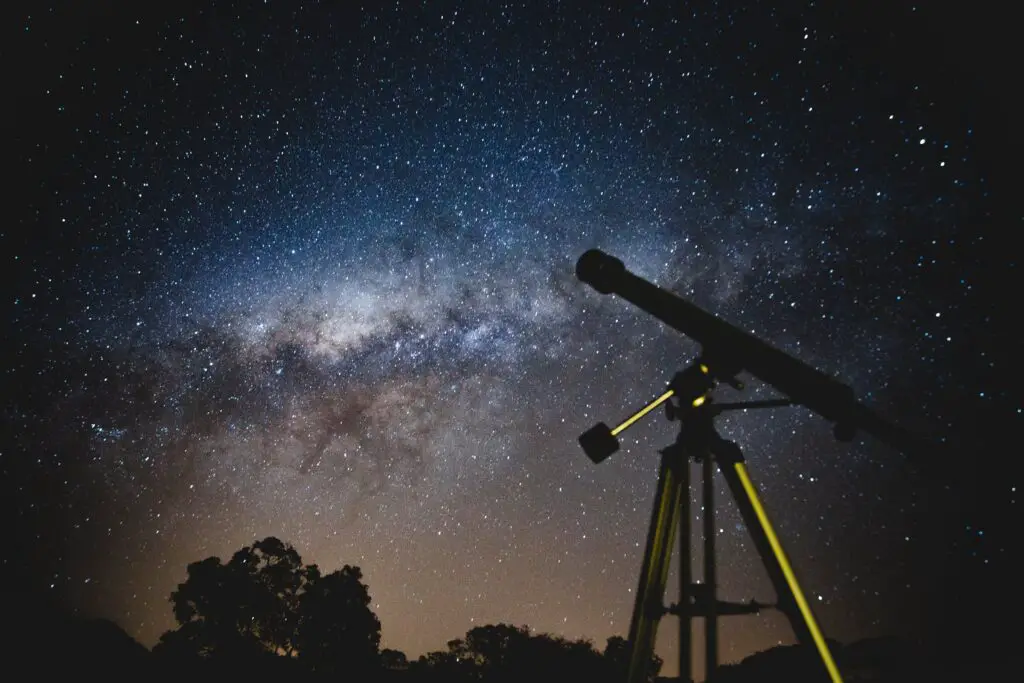
Finding the Best Spots for Stargazing for Beginners
The key to a magical stargazing experience is finding a location far from light pollution. As an avid astronomy enthusiast, I’ve discovered some of the best places to set up my telescope are secluded spots in nature.
One of my favorite places is camping in national parks and forests. Most parks have designated camping areas that offer stunning views of the night sky once the sun sets and the crowds dwindle. The farther I hike from visitor centers and lodges, the better the view gets! Some of the darkest night skies I’ve seen were while camping in Death Valley, Joshua Tree, and Grand Canyon National Parks.
For stargazing close to home, I scout out secluded fields, hilltops, and mountain roads outside of major cities and suburbs. The higher the elevation and the more isolated the location, the less atmospheric interference there is. Stargazing on moonless nights is ideal, as the brightness of the moon can overwhelm the night sky and reduce the visibility of stars and celestial objects.
Beaches and deserts also make fantastic stargazing destinations, especially when far away from coastal towns. The wide-open views and lack of obstructions allow you to see expansive starscapes, constellations, and even meteors. Some well-known stargazing beaches in the U.S. include Cherry Springs State Park in Pennsylvania, Goldendale Observatory State Park in Washington, and Goblin Valley State Park in Utah.
With the right location and conditions, you’ll be amazed at everything visible to the naked eye. Bring along sky maps or astronomy apps to help identify stars, constellations, planets, and deep-sky objects. Once you get hooked, you may even want to invest in binoculars or a small telescope to see even more celestial wonders. The night sky is filled with endless discoveries, so get outside and start exploring!
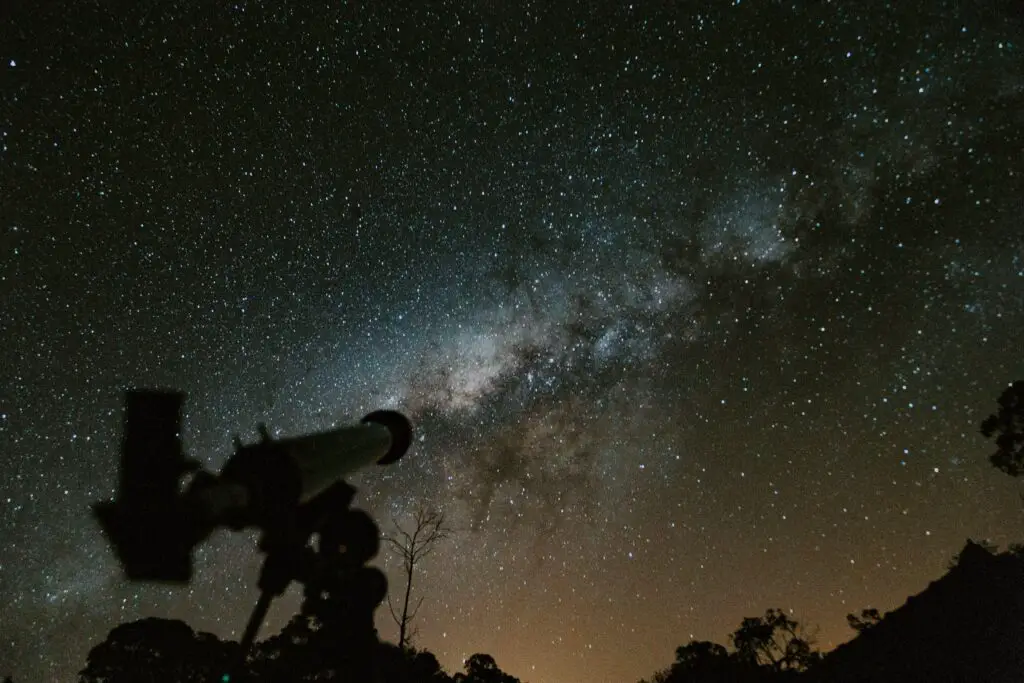
A Beginner’s Guide to Identifying Constellations
Stargazing is one of my favorite hobbies, and learning the constellations is a magical first step to understanding the night sky. Once you know how to spot the constellations, you’ll see familiar shapes and patterns each time you look up. The night sky will transform into a sea of celestial wonders before your eyes!
To get started, grab a star chart or sky-viewing app and head outside on a clear, moonless night. Give your eyes 15-20 minutes to adjust to the darkness. Then, look for the brightest stars and start connecting the dots. Some of the easiest constellations to spot are:
- Ursa Major (the Big Dipper): This constellation looks like a big spoon. Once you find the Big Dipper, you’ll see it points to the North Star, which remains fixed in the sky.
- Orion (the Hunter): Look for three bright stars in a row that make up Orion’s belt. On either side are his shoulders and feet. Orion is one of the most recognizable constellations.
- Leo (the Lion): Leo looks like a backward question mark. The bright star at the base of the question mark is Regulus, Leo’s heart.
- Cygnus (the Swan): Cygnus forms a cross-shape in the sky. At the top of the cross is Deneb, one of the brightest stars visible in the night sky.
With regular stargazing, you’ll get better at spotting different celestial wonders like planets, meteors, comets, and even galaxies! Don’t get frustrated if you struggle at first. Learning the constellations takes practice. Start with a few at a time, then build up your knowledge over multiple stargazing sessions. Before you know it, the night sky will become filled with familiar friends. Happy stargazing!
Astrophotography Tips for Stargazing Beginners
I absolutely love capturing images of the night sky! Astrophotography has become one of my favorite hobbies since I started stargazing. There’s something magical about being able to capture the beauty of the Milky Way, bright nebulae, and distant galaxies.
If you’re just getting into astrophotography, here are a few tips to help you get started:
- Invest in a DSLR camera. A digital single-lens reflex camera allows you to see exactly what the lens sees through the viewfinder. Look for one that can shoot in manual mode and has low light sensitivity.
- Get the right lens. For most beginners, a wide-angle lens between 14 to 35 mm works great for capturing scenic night sky vistas and large constellation fields. As you get more advanced, consider a telephoto lens to zoom in on distant celestial objects.
- Use a tripod. A sturdy tripod is essential for eliminating blur from camera shake. Look for a tripod specifically designed for astrophotography that can support the weight of your camera and lens.
- Shoot in manual mode. Manual mode allows you to adjust settings like ISO, aperture, and exposure time to get the perfect shot. Start with a high ISO, wide aperture, and exposure time between 15 to 30 seconds. Make adjustments from there based on your results.
- Consider image stacking. Taking multiple shorter exposures and stacking them together helps reduce noise and captures fainter details. Use post-processing software like DeepSkyStacker to align and stack your images.
- Do your research. Learn to recognize constellations, bright stars, and celestial objects in the night sky. Then determine the best time of year and optimal location for capturing photos of specific targets. Planning your shots in advance will make you much more successful.
- Practice patience. Achieving stunning astrophotos requires experimenting with different settings and techniques, dealing with equipment challenges, and sometimes just plain luck! Don’t get frustrated if your first attempts aren’t perfect. With regular practice, your skills will improve over time.
Stargazing and astrophotography are extremely rewarding hobbies. By following these tips, you’ll be capturing gorgeous images of the night sky in no time and well on your way to becoming an astronomy enthusiast! Let me know if you have any other questions. I’m happy to help in any way I can. Clear skies!
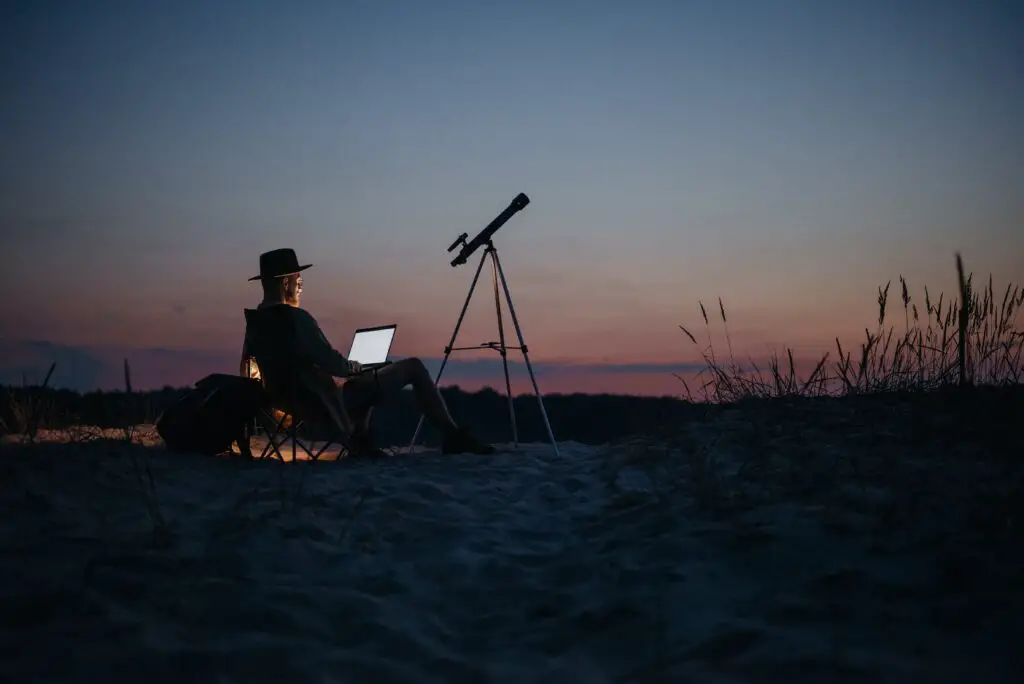
Common Questions About Stargazing for Beginners
Ever wondered what those twinkling lights in the night sky are? As an amateur astronomer, I get asked a lot of questions about stargazing. Here are some of the most common ones from beginners:
What equipment do I need to get started?
To start stargazing, all you really need are your eyes! Once you get familiar with the night sky, you can consider binoculars or a telescope. Binoculars are perfect for beginners – they’re easy to use and provide a wider field of view so you can see more of the sky at once. If you want to get a closer look at planets and galaxies, a basic telescope will do the trick. You don’t need anything too fancy or expensive to get started.
Where are the best places for stargazing?
The farther you get from city lights, the more stars you’ll see. Head to a local park, campground or nature preserve. Mountain locations are ideal since they’re far from light pollution. If that’s not possible, face away from city lights. Give your eyes about 20 minutes to adjust to the darkness for the best views.
What are some easy objects or constellations to spot?
Some of the easiest celestial sights for beginners include:
- The Moon: Even a beginner telescope will give you a close-up view of lunar craters and mountains.
- The Big Dipper: This famous constellation is easy to spot and helps you locate other stars and constellations.
- Orion: This constellation contains bright stars like Betelgeuse and Rigel and is visible even from light-polluted areas.
- The Andromeda Galaxy: Under dark skies, you can spot this with the naked eye as a fuzzy patch. Through binoculars, you’ll see its spiral shape!
- Jupiter and Saturn: These are two of the brightest planets in our solar system. You may even spot some of Jupiter’s moons with binoculars!
The wonders of the universe are there for you to discover. Don’t be afraid to start small and work your way up. With regular stargazing, you’ll be navigating the night sky in no time! Clear skies and happy stargazing!
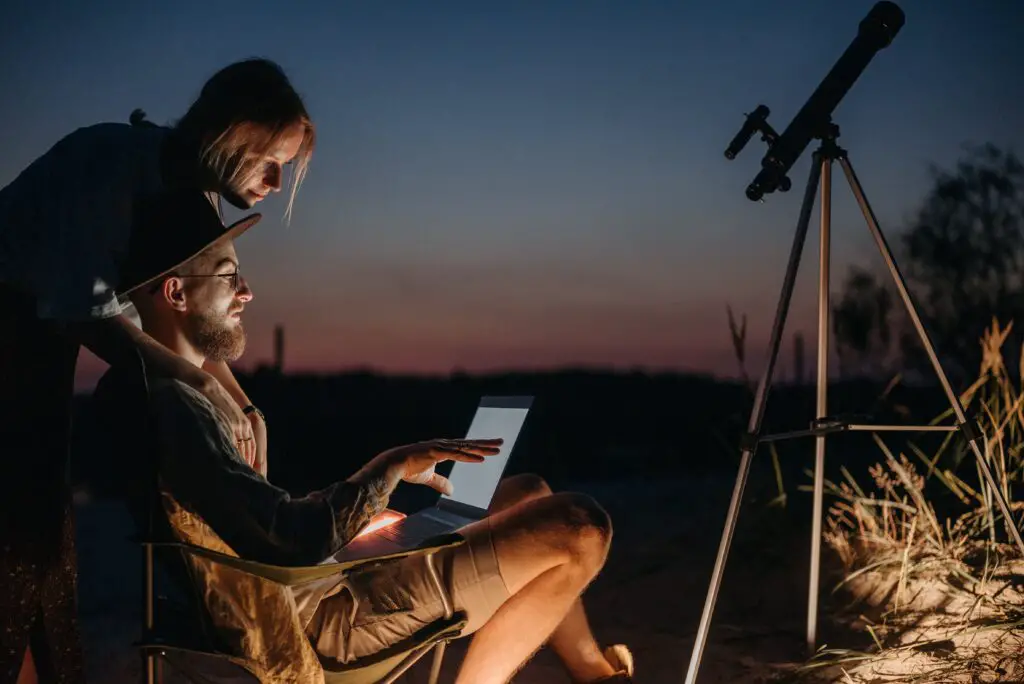
Looking up at the stars fills me with such joy and wonder – I can’t get enough! Now that I’m equipped with my telescope and trusty star charts, the mysteries of the cosmos are at my fingertips. Every night adventure reveals new surprises. I may be just one small speck within the grand celestial sphere, but I feel connected to the whole universe when I peer into infinity. My beginner’s guide has unlocked this magical world for me to explore.
Who knows what I’ll discover next as I continue my stargazing journey! The night sky sparkles with possibilities, waiting for me to unravel its secrets one starry night at a time. I can’t wait to see where this new hobby takes me as I chart my course across the galaxies!

